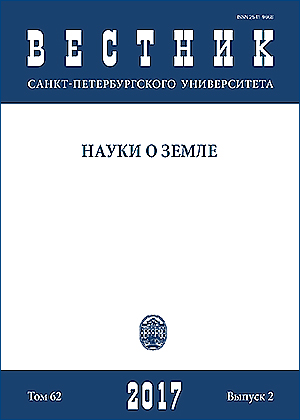The impact of environmental and anthropogenic factors on composition of peloids in modern salt lakes
DOI:
https://doi.org/10.21638/11701/spbu07.2017.204Abstract
Mineralogical, geochemical, and granulometric characteristics of bottom sediments of the Dead Sea and Crimean salt lakes are analyzed to identify geological and anthropogenic aspects aecting their composition. Regional geological conditions determine a signicantly sulphate mineral-salt type and chemical composition of peloids of Crimean salt lakes, and chloride-carbonate mineral-salt type and chlorine-calcium composition of the Dead Sea peloids. Local geological factors inuence the geochemical and particle size characteristics of peloids: composition and geochemical specialization of surrounding rocks provide a Cu—Rb—Zn—Mo—Ca—Cl association in peloids of the Dead Sea and Fe—V—Mn—Co—Y—Pb association in the mud of some Crimean lakes and bedding conditions of the mud layer aect the granulometric characteristics of peloids. The anthropogenic impact is manifested in the characteristics of peloids in some salt lakes of the
Crimea. Extremely low contents of salts (halite) and salt-forming elements (Cl, S) in the mud of Lake Kuchuk-Adzhigol is caused by its pollution and man-made wastewater. Coarse particle size of peloids of Saki Lake is caused by long-term use of mud sediments. e development of an iron ore mine and factory near Lake Tobechik led to the industrial pollution of the lake mud by arsenic, manganese and iron.
Keywords:
Crimean salt lakes, the Dead Sea, peloids, lake sediments, anthropogenic factors
Downloads
References
References
Downloads
Published
How to Cite
Issue
Section
License
Articles of "Vestnik of Saint Petersburg University. Earth Sciences" are open access distributed under the terms of the License Agreement with Saint Petersburg State University, which permits to the authors unrestricted distribution and self-archiving free of charge.






